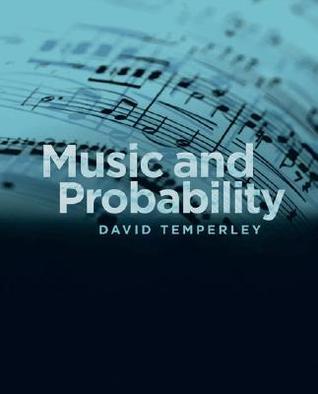What do you think?
Rate this book


256 pages, Hardcover
First published December 15, 2006
"Thus successful musical communication depends on shared knowledge about the style. I will argue here, however, that it depends also on the nature of the style itself."
"The function of any communication system, linguistic or musical, is to convey certain types of information: for example, syntactic relations in the case of language. If the source of this information is lost (e.g., case endings in Middle English), some other means must be found of conveying it (fixed word order).
Another causal pattern may occur as well: if a kind of information, already present in the language in one form, is introduced in another form as well, the initial form of the information becomes redundant and may drop out."
In Music and Probability, David Temperley explores issues in music perception and cognition from a probabilistic perspective. The application of probabilistic ideas to music has been pursued only sporadically over the past four decades, but the time is ripe, Temperley argues, for a reconsideration of how probabilities shape music perception and even music itself. Recent advances in the application of probability theory to other domains of cognitive modeling, coupled with new evidence and theoretical insights about the working of the musical mind, have laid the groundwork for more fruitful investigations. Temperley proposes computational models for two basic cognitive processes, the perception of key and the perception of meter, using techniques of Bayesian probabilistic modeling. Drawing on his own research and surveying recent work by others, Temperley explores a range of further issues in music and probability, including transcription, phrase perception, pattern perception, harmony, improvisation, and musical styles.Music and Probability--the first full-length book to explore the application of probabilistic techniques to musical issues--includes a concise survey of probability theory, with simple examples and a discussion of its application in other domains. Temperley relies most heavily on a Bayesian approach, which not only allows him to model the perception of meter and tonality but also sheds light on such perceptual processes as error detection, expectation, and pitch identification. Bayesian techniques also provide insights into such subtle and advanced issues as musical ambiguity, tension, and "grammaticality," and lead to interesting and novel predictions about compositional practice and differences between musical styles.
### Review
"Temperley has made a seminal contribution to the emerging fields of empirical and cognitive musicology. Probabilistic reasoning provides the glue that attaches theory to data. Temperley, an accomplished and imaginative music theorist, knows the data of music to which he lucidly applies probabilistic modeling techniques. The emphasis is on Bayesian methods and the result is a firm empirical grounding for music theory."--David Wessel, Professor of Music, University of California, Berkeley
"As he did in *The Cognition of Basic Musical Structures*, Temperley here challenges the frontiers of the definition of music theory and cognition." **J. Rubin ** *Choice*
### About the Author
David Temperley is Associate Professor of Music Theory at the Eastman School of Music, University of Rochester, and the author of *The Cognition of Basic Musical Structures* (MIT Press, 2001).